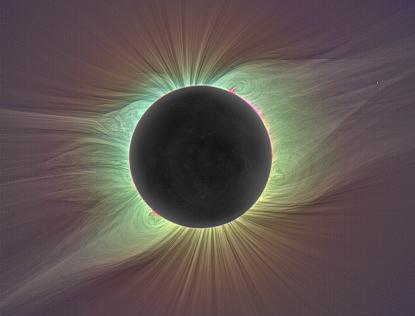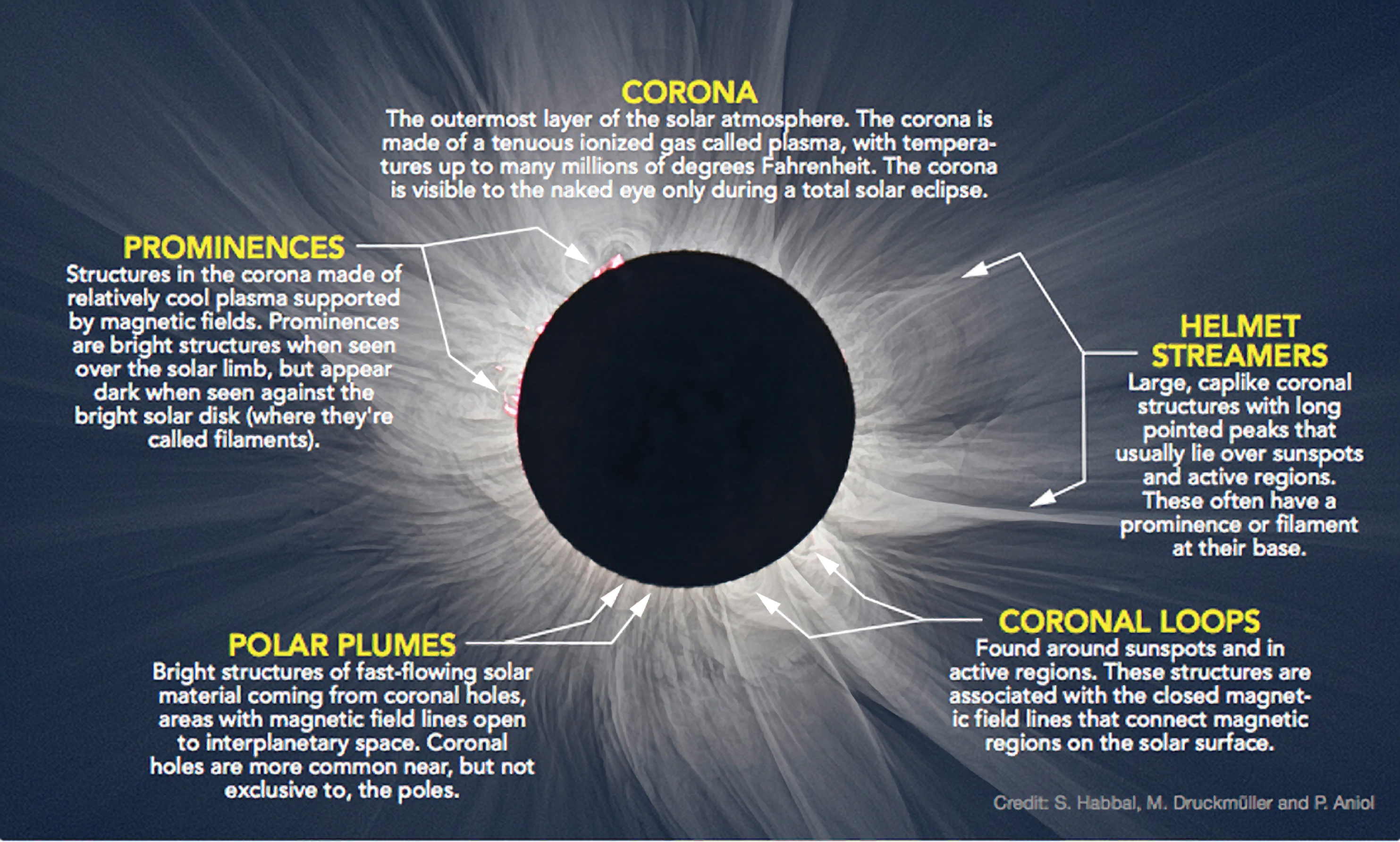
Image of the solar corona taken during the 2008 total solar eclipse .
© 2008 Miloslav Druckmüller, Peter Aniol, Vojtech Rušin.
Reproduced with permission.

 CAUTION: Never look directly at the Sun!
CAUTION: Never look directly at the Sun!
Never look at the Sun through binoculars or a telescope unless you have the proper filters! A solar eclipse occurs when the Moon, during its monthly trip around the Earth, happens to line up exactly between the Earth and the Sun. The glory of a solar eclipse comes from the dramatic view of the Sun's corona, or outer atmosphere, which we can see only when the brilliant solar disk is blocked by the Moon. The corona is not just light shining from around the disk. It is actually the outermost layer of the solar atmosphere. Although the gas is very sparse, it is extraordinarily hot (800,000 to 3,000,000 K), even hotter than the surface of the Sun! The corona shows up as pearly white streamers, and their shape is determined by the Sun's current magnetic fields. Thus every eclipse will be unique and beautiful in its own way.
How do eclipses work?To learn how an eclipse works, try the solar eclipse modeling activity.Observing a Solar Eclipse
When there is a solar eclipse, it is only visible from a small area of the Earth. It's unlikely that, during your lifetime, you will ever have a total solar eclipse right where you live. However, many people travel long ways to experience a total solar eclipse. Or, if you're lucky, you might be able to see a partial solar eclipse (one where the Moon doesn't quite cover all the Sun's disk) nearby someday. You can safely observe a TOTALLY eclipsed Sun with your eyes. However, for observing the beginning and ending of an eclipse, or for a partial eclipse, you will need a pinhole camera, an appropriate type (#14) of welder's glass, or special Mylar eclipse glasses to observe the Sun safely. As you observe an eclipse, try to imagine sketching the shapes and colors you see. (Your camera will not be able to pick up these structures.) Look for the features below. Also, avert your gaze frequently, since each time your eyes return to the spectacle, your brain will (re)store the image!

What to look for in a total solar eclipse Learn more about eclipsesWould you like to find out when and where solar eclipses will occcur? Try NASA's Eclipse SiteWould you like to know how scientists use eclipses to study the Sun? Watch this video: Colors and Motions of the Sun If an eclipse occurs when the Moon lines up between the Earth and the Sun, shouldn't there be an eclipse every month? Solar eclipses do occur at New Moon, but not at every New Moon. Most often the Moon passes a little higher or a little lower than the Sun. There is a solar eclipse once or twice a year, when the Moon's and Sun's positions exactly line up. |